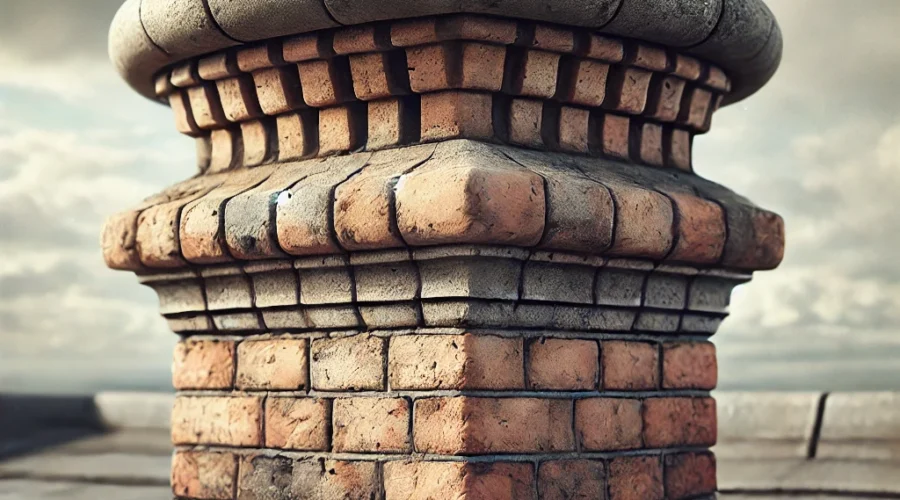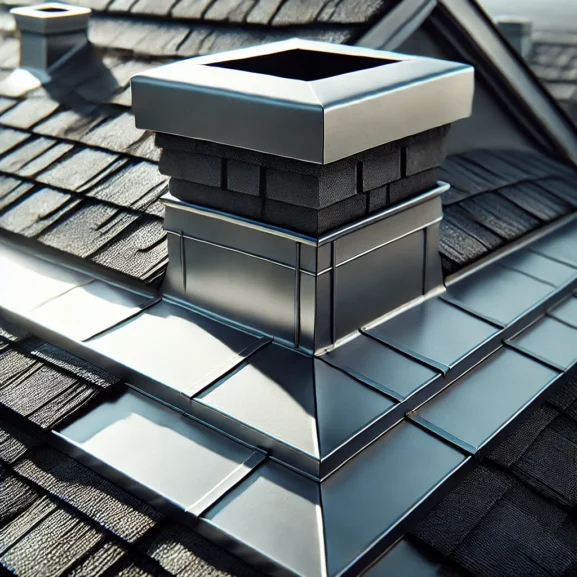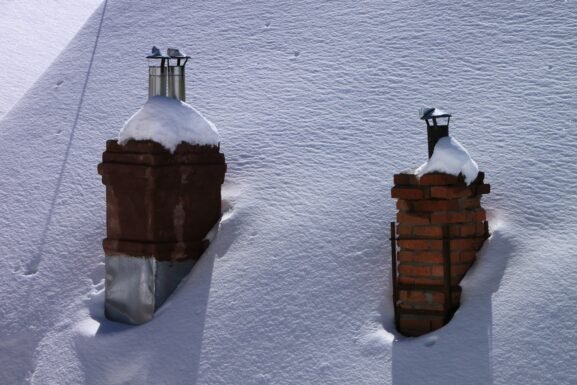Preventing Collapse of Chimney Crowns from Aging and Weather Exposure: Essential Tips
Chimney crowns often go unnoticed, but they deserve a lot of credit. They withstand tough weather year after year. However, with constant exposure, they can become dangerous over time. When chimney crowns fail, it’s not just a structural problem. It’s also a serious safety concern for the stability of our homes.
We fail to realize the signs of deterioration when they are still early to respond to and fix. Here are some early signs that your chimney crown may fail: cracks, leaks, and spalling. Knowing these signs can help you take action early. This can save you money in the long run. It also helps keep your home safe. This guide will go over what causes chimney crowns to deteriorate. We’ll show you how to prevent this kind of damage. We’ll also share practical tips to protect your home from further wear. Over time, the weather can be harsh on your home, but you can keep it in better shape with a few steps.
Chimney Crowns Explained: What Homeowners Need to Know
Chimney crowns are a chimney’s helmet, protecting it from rainfall, snow, and sleet. But let’s be honest: Like any umbrella, they can become worn out. Cracks, leaks, and crown deterioration aren’t just cosmetic issues; they point to underlying problems.
Warning Signs of Chimney Crown Issues:
- Cracks: Even tiny cracks, like hairline ones, can become major problems. This happens because of freeze-thaw cycles in chimneys.
- Leaks: When water finds its way in, water damage to chimney crowns accelerates.
- Chipping: Small cracks in the crown can lead to bigger ones. Over time, these small breaks can cause the entire crown to collapse.
Aging chimney crowns don’t get better with time; they fall apart. Exposure to the weather makes this worse. Icy winters and hot summers are especially tough on chimneys.
If you’re dealing with them, it’s not the time to go it alone. Feel free to reach out to certified professionals for consultation.
Stay informed about maintenance to prevent weather-related chimney damage. For further reading, visit the NFPA for fire safety tips.
Causes of Chimney Crown Deterioration
Chimney crowns are like your favorite pair of jeans; they don’t last forever. Aging and harsh weather put a lot of strain on your chimney’s structure. Over time, this causes wear and tear on the crown. When this happens, it’s best to let professionals handle it. We’re happy to discuss your situation over the phone if you’d like. Reach out to certified professionals for a consultation. As to do-it-yourself solutions – don’t; we assure you, this isn’t nearly as entertaining as it sounds. Now, let’s dissect some causes.
Aging and Material Fatigue
The toughest of structures wear out. Chimney crowns made from bricks can wear down over time. They endure repeated heating and cooling each year. As time passes, the material loses flexibility. This decline can cause cracks and even lead to failure.
- Material Fatigue: Concrete and mortar weaken over time, causing more susceptibility to damage.
- Chimney Structure Aging: Settling and shifting of house structures affect crown integrity.
Cracked chimney crowns might look like they could join a rock band, but they’d rather not. For professional repairs, rely on certified experts. External resources, like the National Fire Protection Association, offer great insights into fire safety and maintenance.
Weather Exposure Impact
It has been observed that weather most often follows the script of crown collapse. Temperature fluctuation and moisture content variations are considered major causes of deterioration. People know these challenges well because the weather often changes.
Freeze-thaw cycles are one of the biggest problems. Water gets into cracks in the winter. When it freezes, it expands, making the damage worse. It’s a constant issue during the winter.
- Weather-Related Chimney Damage: Rainwater accelerates crown erosion and leads to water damage.
- Crown Deterioration: Intense sun exposure and harsh winters cause material degradation over time.
When nature isn’t cooperating, seeking professional help from approvedchimney.com is essential. Check out the Chimney Safety Institute of America for further fire safety guidance.
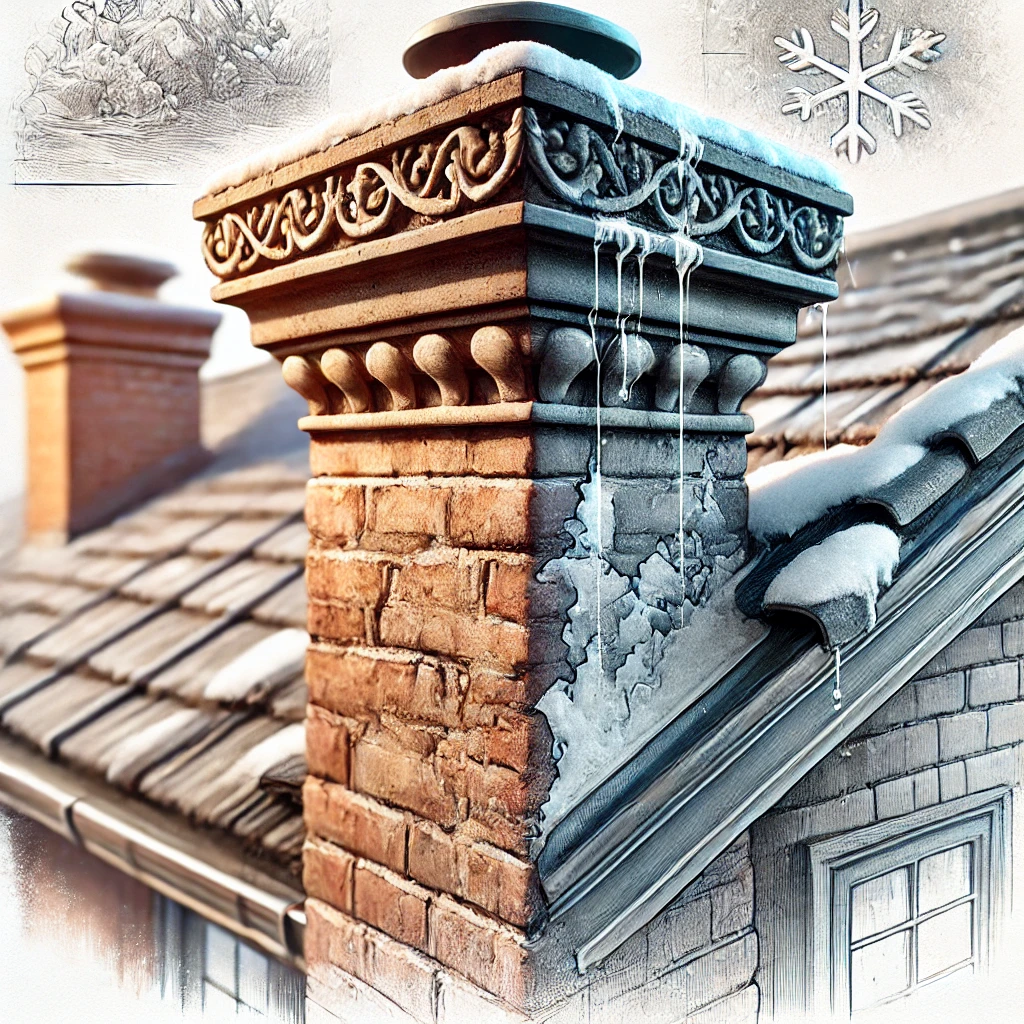
Signs of Chimney Crown Failure
Chimney crowns are the upper parts of your home’s chimney. You may not think about them often. However, they can deteriorate over time due to harsh weather. It’s important to spot problems with the chimney crown early. This can help you avoid bigger issues and extra costs later on. In this article, we will talk about how to spot warning signs early. It’s important to notice these signs before they become serious issues. Let’s dive in! If you require any assistance, feel free to contact professionals for consultation.
Visible Cracks and Damage
Cracks in chimney crowns are like wrinkles on an experienced adventurer. They show the effects of weather and time on your chimney. Look for:
- Surface Cracks: Small fissures indicate early crown deterioration.
- Large Gaps can invite elements like water, leading to severe aging of the chimney structure.
- Chipped Edges: Freeze-thaw cycles in chimneys can cause visible chips.
If not addressed, even small cracks can lead to bigger issues like crown collapse. Professional inspection helps prevent costly repairs. For in-depth fire safety information, visit the Chimney Safety Institute of America.
Water Leakage and Staining
Water leakage is a sneaky culprit of chimney crown failure. Watch for:
- Interior Stains: Water damage to chimney crowns can create unsightly ceiling stains.
- Moisture Indoors: Leaks into the home suggest compromised crowns.
- Mold Growth: Persistent dampness can foster mold, a silent threat to health.
If your chimney area resembles the aftermath of a water balloon fight, it’s time to consult us. Professional intervention prevents further water exposure impact on chimneys. Homeowners face unique weather challenges like heavy snow and rain—timely repairs save frustrating water woes. For additional resources on fire safety, check out the National Fire Protection Association.
Prevention and Maintenance Tips
Chimney crowns are damaged by aging and weather exposure; however, some measures should be taken to avoid significant damage. Here’s how to keep yours intact and avoid chimney crown failure and other headaches that come with it.
Regular Inspections
Routine inspections prevent weather-related chimney problems. Our team looks for cracks and gaps in the crown as signs that the crown might be deteriorating. Maintenance lowers cost and hassle—this procedure resembles your chimney’s physical. Lack of signs may sound comical at some level, but not when water enters your house through the roof. For free consultation, please reach out to certified professionals. Get peace of mind and keep your chimney crown in top shape. Check out the Chimney Safety Institute of America for more facts on chimney care.
Protective Coatings and Repairs
The protection layer plays a big role in avoiding water infiltration on the crowns of chimneys. These are important in areas of freeze-thaw cycles, particularly in chimneys. We apply high-quality sealants and do necessary chimney crown repairs to ensure small cracks do not develop into gigantic issues. Our services enable you to prepare for the accessibility of specific facets of service information. As you can imagine, do-it-yourself home repair jobs can be disastrous and, therefore, should left to the technicians. Check the National Fire Protection Association for safety standards and more information. Don’t delay; call us to safeguard your chimney from the elements.
Repair and Restoration Solutions
Chimney crowns are important in a home because they provide shelter from weather conditions. However, like most structures, chimneys age and are constrained by the freeze-thaw cycles. Crowning is one of those responsibilities that, if it shows signs of failure, needs the intervention of professionals.
Professional Repair Options
Weather exposure impacts chimneys by causing cracks and deterioration. Certified professionals use techniques like the following to address these issues:
- Crown Rebuilding: Cracked chimney crowns might need rebuilding, especially if severe crown collapse or structural compromise occurs.
- Sealant Application: Sealants protect against water damage to chimney crowns and prevent further deterioration.
Our experts aren’t just masonry magicians; they’re also safety enthusiasts. (No disappearing acts here, folks!) When chimneys reach the end of their proverbial rope, professional repairs ensure longevity and safety.
Remember, DIY repairs might sound appealing but often lead to more issues. Reach out to certified professionals to book a consultation or check out resources from the Chimney Safety Institute of America and the National Fire Protection Association.
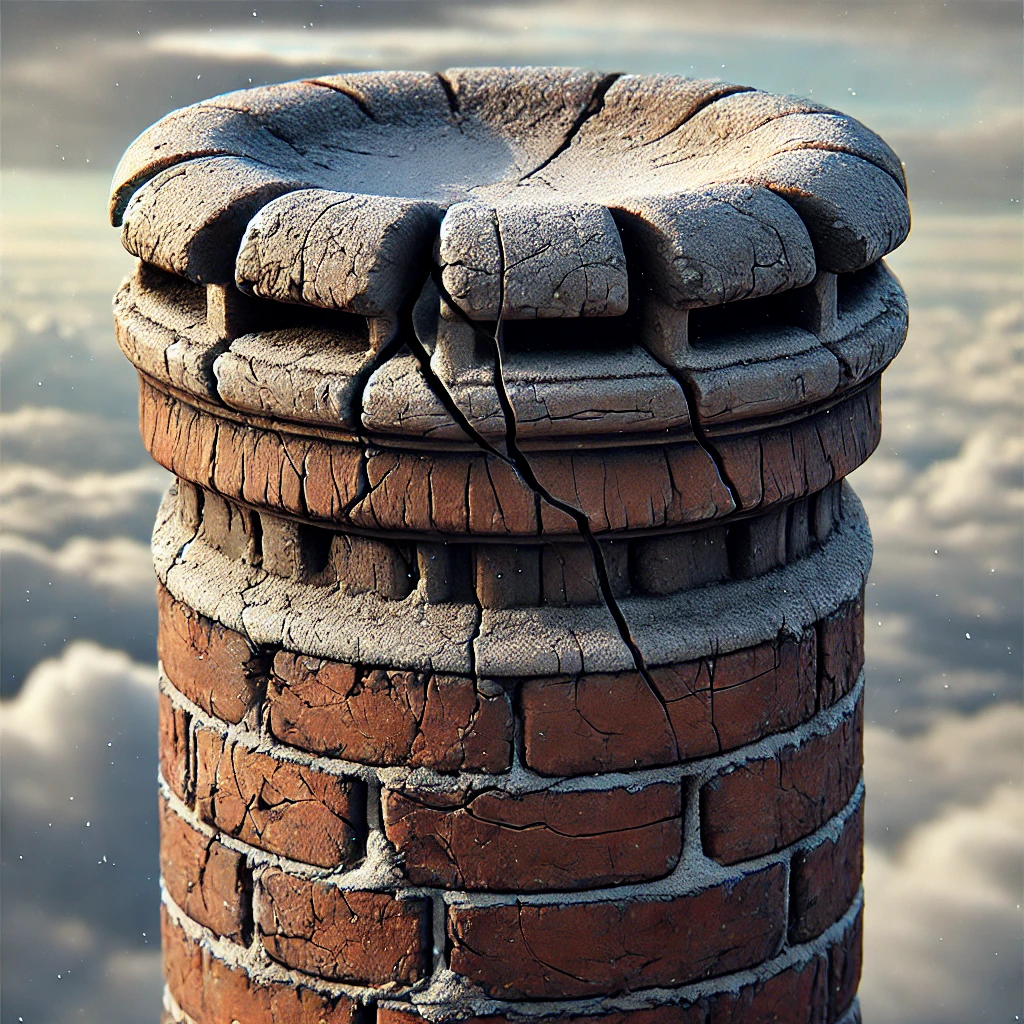
Conclusion
Chimney crowns protect our homes from harsh weather. If they are damaged, they can pose risks to everyone living in the house. It’s important to spot problems early and seek professional help. This proactive approach helps us maintain our chimneys’ stability. By scheduling regular check-ups and using professional services, we can prevent expensive repairs later. This helps us save money and keep everything in good shape. We shouldn’t wait for issues to arise. Instead, we should invest time and money in maintenance. When we hire certified specialists, we can better protect our homes. They know how to handle problems that come with aging and changing weather. Their expertise helps us avoid costly repairs down the line. It’s a smart choice to ensure our homes stay safe and in good condition.
Frequently Asked Questions
What is the primary function of a chimney crown?
The chimney crown can be referred to as the roof of your chimney as it helps to shield it from rain, snow, and sleet. It keeps out dampness, which, if allowed to penetrate the chimney structure, will eventually lead to damage. For instance, in the absence of a functional crown, water and the vagaries of the weather lead to cracks and leakage, among other things.
Why is it important to inspect a chimney crown regularly?
Diagnosis at an early stage allows for the treatment of problems such as cracks, spaces, and blunt edges before they become severe. Identifying problems early in an experiment is always important rather than waiting for more profound issues to develop, which may sometimes lead to expensive fixations. This way, it guarantees the chimney will remain the right one and protect your home from harsh weather conditions.
What are the common signs of chimney crown deterioration?
Failing signs include cracking surfaces, a large dent on the crown, chipped edges, a watermark from leakage on the inner parts, and the black formation from the water, commonly known as mold. If you have any of these, they may be signs that your chimney crown needs repair from a professional chimney sweep.
Should homeowners attempt DIY repairs on chimney crowns?
Some homeowners try to repair chimney crowns themselves as it does not cost much; however, such attempts are undesirable since a poorly done job can aggravate the situation. Some of these problems are best handled by certified chimney experts who know and have the right equipment to fix them.
How do harsh weather conditions affect chimney crowns?
Freeze-thaw cycles and strong sunlight break and weaken the chimney crowns over time. These sorts of wear and tear damage the outer layer of the crown, affecting the chimney’s capacity to prevent water infiltration and causing more structural issues.
What repair options are available for damaged chimney crowns?
When chimney crowns are breached, various professional repair services are available: crown replacement for extensively damaged surfaces and the addition of sealants for hairline cracks to prevent future water damage. Referral to certified personnel will ease the selection of the right procedure for repair.
Why are regular inspections and maintenance crucial for chimney crowns?
Due to fluctuating temperatures, extremely harsh weather puts pressure on chimney crowns. This activity ensures that an early check is performed, especially for parts that are bound to be affected by stiff weather conditions that provoke extensive damage.
